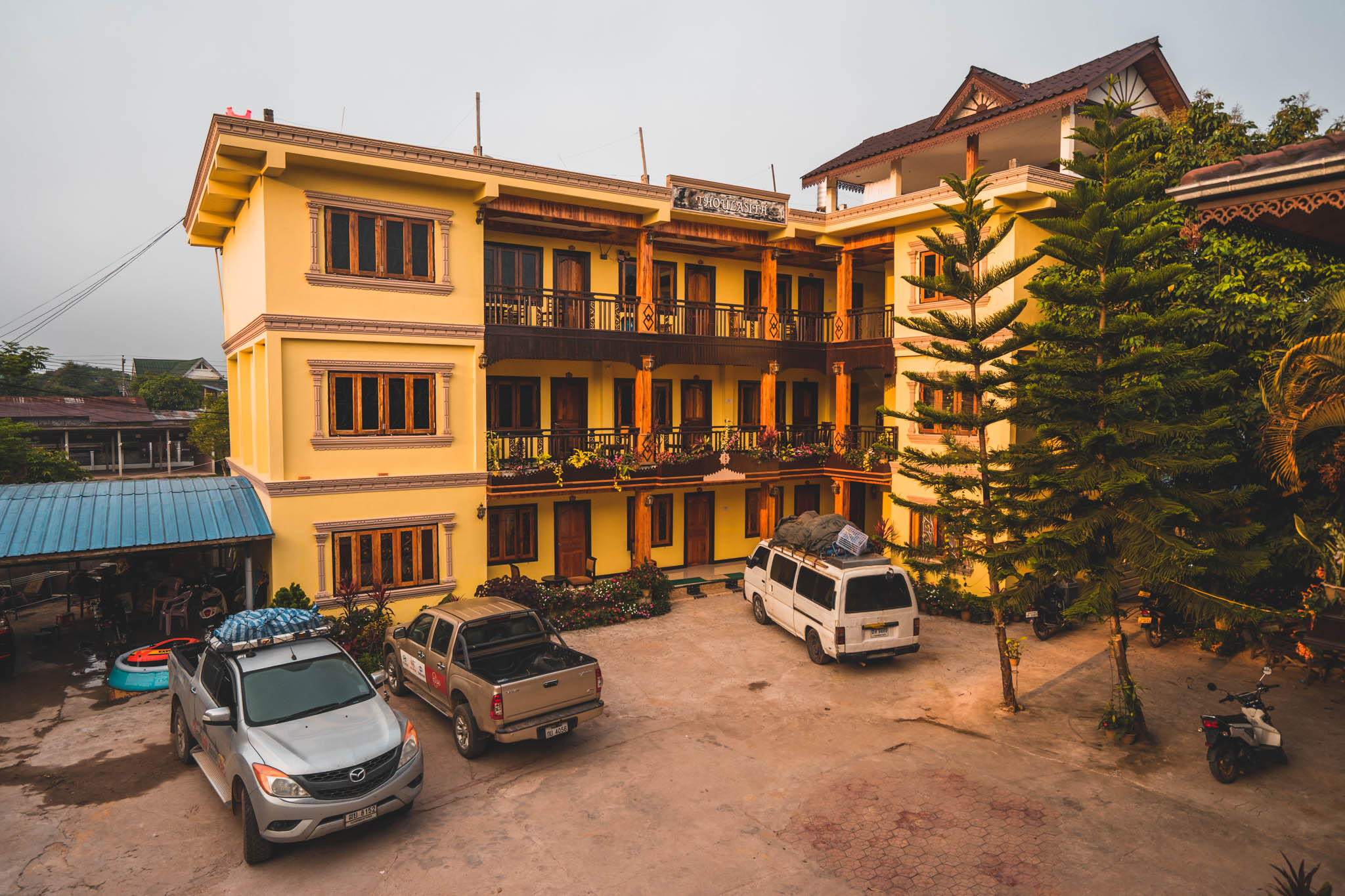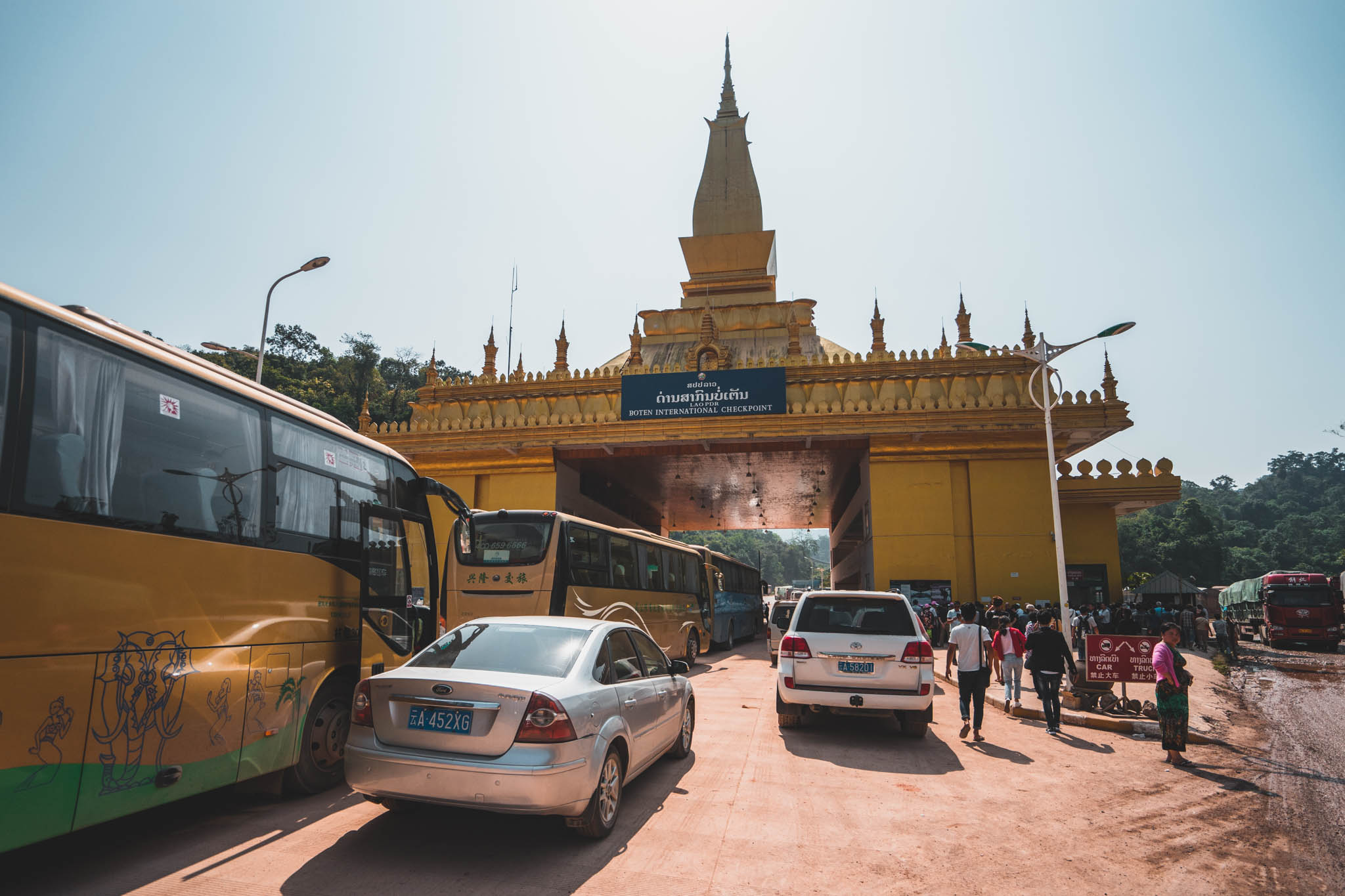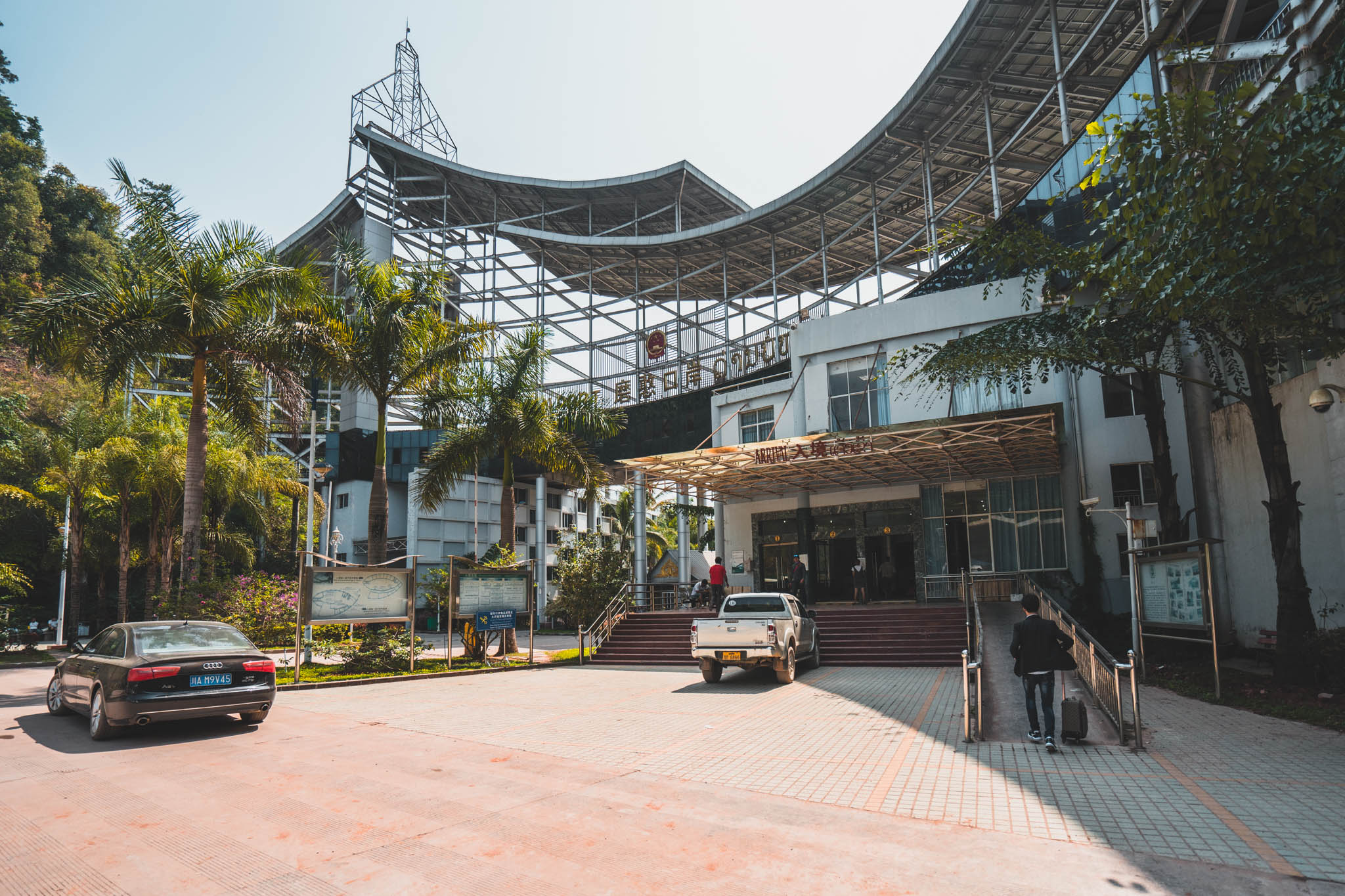Story / 13 Oct 2017 / 0 COMMENTS
Crossing the border from Laos to China at Boten
One of the reasons I prefer to travel overland is that you slowly move between the different places, giving you enough time to gradually ease into a new culture, landscape or climate. Border crossings however are an exception, because you transition between countries that can often be very different from each other. Borders often highlight major disparities in the world dividing rich nations from their poorer neighbors, where your luck depends on which side of the fence or wall you were born into.

However nothing prepared me for Boten the border crossing between Laos and China. I had just left Luang Namtha three hours earlier and border the only bus heading to Jinhong in China. I should have bought the ticket at the station as the hotel marked up 30.000 kip on top of the regular 90.000 kip ticket price. But in hindsight I wanted to make sure I had a seat on the bus and the price also included a ride on the tuk tuk from the town center to the long distance bus station as well.

I slept throug the majority of the ride towards the border but occasionally glanced out of the window and see the tropical mountain landscape pass by. It was during the last 30min until the border that things began to change. At first it was the occasional truck, then an excavator, and out of nowhere a massive construction site surrounded by hundreds of vehicles parked around huge buildings – most of them still unfinished.

The Chinese industrial complex has made its way down to Laos and was turning the tranquil rural landscape into something out of a post-apocalyptic Hollywood movie. The roads were clogged with trucks and cars waiting to cross the border, but our bus managed somehow to sneak in between them in order to drop us off at the Lao border post. Here the scene of chaos continued, but instead of cars, people were lining the streets, most of them Chinese tour groups eagerly waiting to get home.

Like many South East Asian border posts this one has seen better days and was only equipped with the bare minimum of furniture and equipment to function. One of those things was a large signboard detailing handling fees to cross the border, compelling me to prepare 10.000kip just in case.

It only took 5min and I was through the immigration minus 10.000kip to pay for the privilege. We boarded the bus once again in order to reach the Chinese side of the border. The moment we approached the border proper (marked by a large stone) we seemingly crossed between two completely different worlds. Whereas chaos, dirt and poverty set the tone on the Laos side, the Chinese have turned their patch of the border into a tranquil tropical oasis dotted with beautiful gardens, modern buildings and an atmosphere of calm I have never expected at all.

Our bags were searched by soldiers of the border police before we could head inside the imposing immigration complex. The inside reminded me more of an airport than anything else, equipped with modern hi-tech machinery like passport and body scanners. “You, passport” I heard someone saying and turned around to face a guard who was looking at me. I quickly handed over my Thai Passport with the Chinese visa bookmarked using the arrival pass I filled out earlier. “Reason for visit?” He asked me in the only English he seemed to know. “Travel” I told him and listed some of the places I planned to visit. “Only one?” He pointed at me referring to me traveling alone. “Yes just me” I responded swiftly with a smile. The baffled look on his face must attest to the fact the they barely see any solo traveler pass through here let alone one from Thailand. As a Chinese woman was about to cut the queue in from of me, he quickly shut her down and let me pass through.
The tropical paradise theme park continued well beyond the border where countless shops line the perfectly laid out streets. It was only when we left the border town where I could see behind this charade and spotted some old buildings being torn down to make way for more presentable ones.

The bus continued up the road that has now turned into a modern highway reminding me of the ones in Germany or Switzerland. There were occasional construction sites here and which grew more frequent, the closer we approached the bigger towns. We made a short stop for lunch in one of those towns, but I couldn’t find any ATM or money exchange close by the bus station, giving me no choice but to skip food and drinks until we arrived in Jinhong.
Jinhong, also known as Xishuangbanna is a major tourist destination for local Chinese, who come here to experience an exotic and tropical place without leaving the country itself. The people who designed the city really played into the whole Southeast Asia theme with houses and even high rises built to look like temples from Laos or Myanmar. “Another theme park” I thought to myself as I counted the elephant and peacock statues dotting the palm lined streets.
We finally arrived at the Jinhong bus station that turned out to be in a completely different location of where I expected it to be. This meant that I had to walk around 3km to the hostel which I thankfully bookmarked on my phone’s offline map. “It’s so clean and orderly” I thought to myself as I walked along one of the many Boulevards and turned into an alley where the hostel was located.





